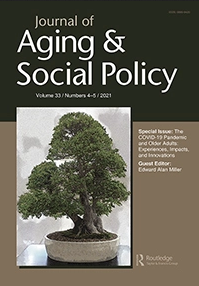Household Composition Under Strain: Regional Unemployment Rates and the Older American Housing Decision
This research explored the relationship between regional unemployment rates and the community-based housing configuration of older Americans. The analysis used the American Community Survey from 2006 to 2016 to examine regions experiencing high unemployment for differences in the likelihood of older adults to live alone, with a spouse or partner, or in a multigenerational household. Findings demonstrated that under the strain of higher regional unemployment, older adults were less likely to live alone and more likely to live in a multigenerational household. Additionally, older adults with a difficulty that could signify a need for support were less likely to live with a spouse or partner, while those without a difficulty were more likely to live with a spouse or partner. Recession-related safety-net policy should target supports to community-dwelling older adults, particularly those living alone, those with more support needs, with lower income, and older renters, because their housing arrangements may become vulnerable during regional economic contraction. Implications during COVID-19 are discussed.

